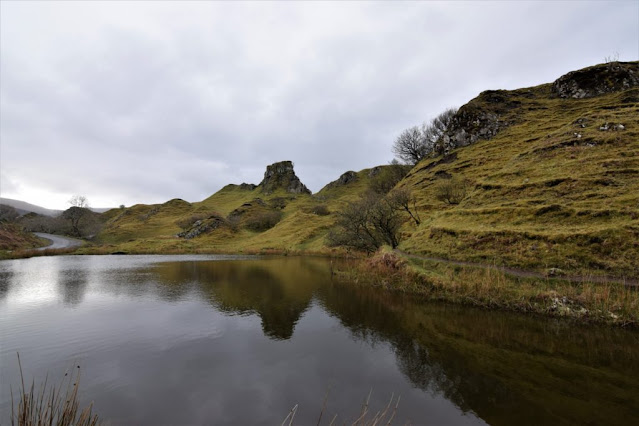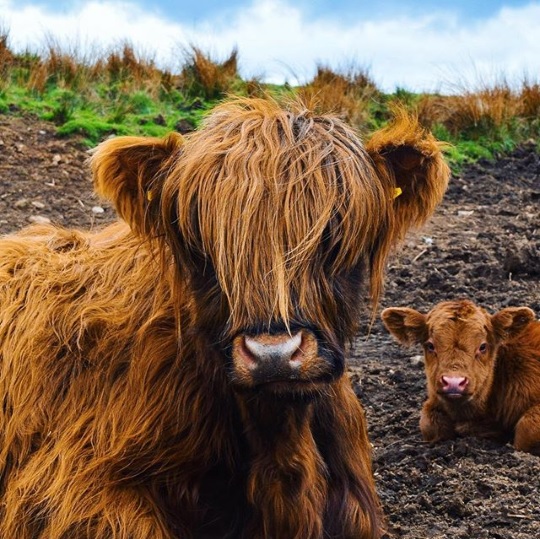Driving in Scotland – All you need to know
Driving in Scotland gives you complete freedom. You can determine your own route and travel at your own pace. But it can also be different from what you’re used to. Here you will find everything you need to know for an amazing road trip through Scotland, with useful tips for driving on the left, single track roads, traffic laws, and many more.
In Scotland driving is on the left side of the road. If you’re not used to this it can be a bit tricky at first. In normal traffic, it’s pretty easy as you just drive in between other cars and follow the flow. However, in situations where you’re driving alone on the road, it’s good to occasionally check your position on the road. Also, remind yourself again to drive on the left when you leave a car park or enter a roundabout.
Single track roads and passing places
Scotland is famous for its single track roads with passing places. You’ll find them a lot in remote areas in the Scottish Highlands. The rules here are pretty simple. If you see a vehicle coming towards you, or the driver behind you wants to overtake, pull in to a passing place on your left. If the passing place is on your right, just stop on the left side of the road, and let the other car pass by on the right side via the passing place.
Some other rules for passing places:
- Give way to traffic coming uphill, even if this means you have to reverse to the previous parking place.
- People often use the headlights to indicate they will wait for you to pass.
- Never park in passing places, you will block all the traffic.
Above all, always stay relaxed and kind. If another car had to reverse or wait for you to pass, it’s customary to make a friendly wave as a “thank you”.
Speed limits
Usually, the speed limit is visible on the road signs. Look for a round sign with a red border and a black number. The speed limit is indicated in miles per hour. If there is no sign, the national speed limits apply:
- Highways and dual carriageways: 70 mph (112 km/h)
- In built-up areas: 30 mph (48 km/h)
- Outside built-up areas
: 60 mph (96 km/h)
Road conditions in Scotland
The road conditions in Scotland are not always optimal. Harsh winters and high traffic volumes cause potholes and loose gravel on the roads. Look ahead while driving and try to avoid potholes, without putting yourself or other fellow road users in danger.
Farm animals on the road
You will encounter lots of sheep and highland cows roaming freely through the countryside. They may stand very close to the road and sometimes even on the road. Always be alert in these areas, as the animal may suddenly move. Adjust your speed a bit when passing.
Fuel
Gas stations offer unleaded gasoline and diesel. The fuel prices are indicated per liter. In the countryside, there are not that many gas stations. Manage your fuel accordingly and always fill up before traveling through a remote area.
Scottish scenery
The scenery in Scotland is amazing! You are going to pull over a lot of times for beautiful photographs and small walks. Allow plenty of time for that. There are lots of small parking areas along the roads for this purpose.
Getting around Scotland by ferry
There are lots of islands in Scotland and some of these islands can only be reached by ferry. But that’s easy with a rental car. Scottish ferry services are very well organized. The websites of the main ferry services have online booking systems and up to date timetables. Book the ferry in advance to avoid long waiting times in the harbor.
Caledonian MacBrayne, or CalMac, operates all the main services to the Inner and Outer Hebrides. NorthLink Ferries operate several services from the Scottish mainland to Orkney and the Shetland Islands. You can also get to Orkney with Pentland Ferries, who run a service between Gills Bay and St Margaret’s Hope on Orkney.
Don’t drink and drive. It is good to know that in Scotland, and in the UK in general, there is a zero-tolerance policy against driving under the influence. In Scotland, the legal limit of alcohol is 50 mg in 100 ml of blood, which is next to nothing. So it is best to not drink at all before driving.
Mobile phone usage while driving is strictly prohibited. Pull over in case you have to make a phone call.
You’ll be happy to know that there are no toll roads or bridges in Scotland.
Real-time traffic information can be found on Traffic Scotland
Renting a car in Scotland
I recommend renting a car with one of the internationally renowned rental agencies, such as Avis, Sixt, Hertz or Europcar. Make sure you add at least the most common insurances, such as the third party insurance and the loss damage waiver.
Also, I strongly recommend getting the windshield and tires insurance, especially if you plan to drive through the Scottish Highlands. Due to the poor road conditions, it’s easy to get a flat tire. In addition, loose gravel on the road may cause a chip in the windscreen. Both things happened to us during our road trip, so we were happy with the extra insurance. It saved us a lot of money.
Parking in Edinburgh and Glasgow is expensive! It’s better to rent your car after leaving the city and avoid paying high parking prices. Public transport is very well organized in both cities.
Do you know another tip for driving in Scotland? How was your driving experience in Scotland? I would love to hear from you in the comments below!
Like it? Pin it!
Pin this handy infographic for future reference.














0 comments